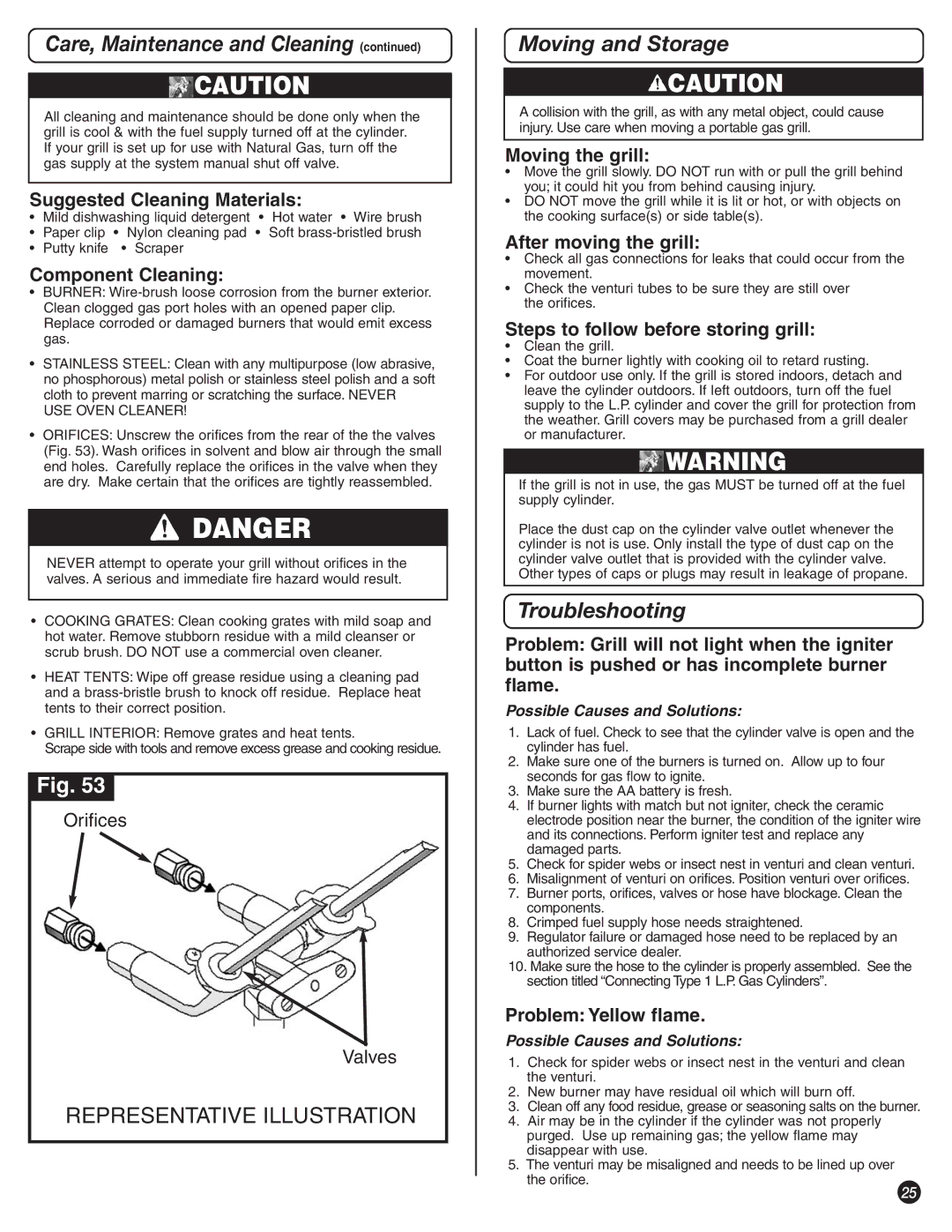9992-645 specifications
The Coleman 9992-645 is a versatile and high-quality camping stove that embodies the perfect blend of performance and convenience for outdoor enthusiasts. Built for adventure, this stove is designed to deliver efficient cooking in a range of outdoor environments, making it an essential companion for camping trips, tailgating, or backyard gatherings.One of the standout features of the Coleman 9992-645 is its dual-burner system. It comes equipped with two powerful burners, each offering up to 10,000 BTUs of cooking power. This means you can cook multiple dishes simultaneously, whether you're boiling water, frying up breakfast, or simmering sauces. The adjustable burners allow for precise temperature control, giving you the flexibility to cook a variety of meals to perfection.
Another impressive characteristic of this camping stove is its durable construction. The Coleman 9992-645 is built with a rugged stainless-steel frame that ensures longevity and resistance to the elements. The weather-resistant design allows users to cook in various outdoor conditions, making it an ideal choice for camping in unpredictable weather.
Ease of use is another hallmark of the Coleman 9992-645. It features a convenient, foldable design that allows for compact storage and effortless transport. The stove is lightweight yet robust, making it easy to carry to your desired cooking location. Additionally, the include windscreen helps shield the flame from gusty winds, maintaining optimal cooking conditions even on blustery days.
Safety is a key consideration in the design of the Coleman 9992-645. The stove is equipped with safety features such as a built-in matchless ignition system, which eliminates the need for cumbersome matches or lighters. This provides added convenience and ensures that you can quickly start cooking without fuss.
In terms of fuel efficiency, the Coleman 9992-645 runs on standard propane canisters, making it easy to find fuel while you’re on the go. Its fuel-efficient design allows for extended cooking times and less frequent refueling, making it an economical choice for outdoor cooking.
Overall, the Coleman 9992-645 is a reliable and practical camping stove, boasting features that cater to the needs of both novice campers and seasoned outdoor chefs. With its powerful burners, robust construction, compact design, and user-friendly features, it stands out as a top choice for anyone looking to elevate their outdoor cooking experience.

